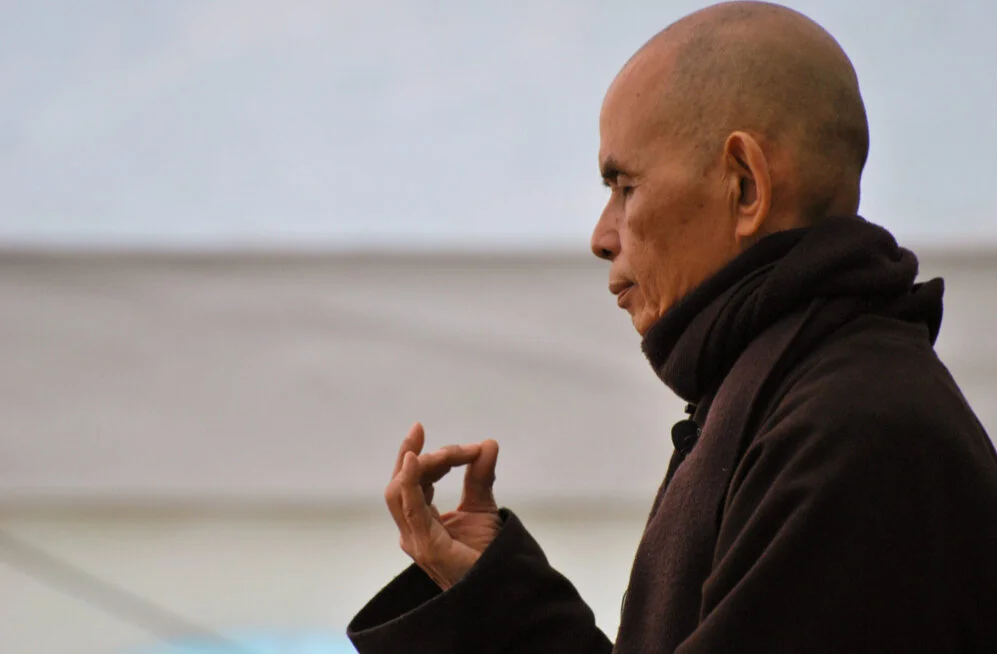Dear Thay, dear friends,
Last week, we had a rich exploration of the Fifth Mindfulness Training, Nourishment and Healing. Many of us shared how certain habit energies prevent us from being in the present moment and how difficult it is to change them - even when we know they are not helping.
No wonder this is challenging! These practices are difficult, even in the easiest of times, let alone now, amidst growing inequality, extreme suffering and uncertainty throughout the world. After all, we interare.
This week, we will watch part of a Dharma Talk, Practicing in a Stressful Environment in which Thich Nhat Hanh describes a concrete process that can help us to transform these habit energies by carefully tending to the seeds in our consciousness. Here is a brief description of the process, from his book, Touching Peace: According to Buddhist psychology, our consciousness is divided into two parts, like a house with two floors. On the ground floor there is a living room, and we call this “mind consciousness.” Below the ground level, there is a basement, and we call this “store consciousness” In the store consciousness, everything we have ever done, experienced, or perceived is stored in the form of a seed, or a film. Our basement is an archive of every imaginable kind of film stored on a videocassette. Upstairs in the living room, we sit in a chair and watch these films as they are brought up from the basement.
Certain movies, such as Anger, Fear, or Despair, seem to have the ability to come up from the basement all by themselves. They open the door to the living room and pop themselves into our videocassette player whether we choose them or not. When that happens, we feel stuck, and we have no choice but to watch them. Fortunately, each film has a limited length, and when it is over, it returns to the basement. But each time it is viewed by us, it establishes a better position on the archive shelf, and we know it will return soon. Sometimes, a stimulus from outside, like someone saying something that hurts our feelings, triggers the showing of a film on our TV screen. We spend so much of our time watching these films, and many of them are destroying us. Learning how to stop them is important for our well-being.
Traditional texts describe consciousness as a field, a plot of land where every kind of seed can be planted—seeds of suffering, happiness, joy, sorrow, fear, anger, and hope. Store consciousness is also described as a storehouse filled with all our seeds. When a seed manifests in our mind consciousness, it always returns to the storehouse stronger. The quality of our life depends on the quality of the seeds in our store consciousness.
We may be in the habit of manifesting seeds of anger, sorrow, and fear in our mind consciousness; seeds of joy, happiness, and peace may not sprout up much. To practice mindfulness means to recognize each seed as it comes up from the storehouse and to practice watering the most wholesome seeds whenever possible, to help them grow stronger. During each moment that we are aware of something peaceful and beautiful, we water seeds of peace and beauty in us, and beautiful flowers bloom in our consciousness. The length of time we water a seed determines the strength of that seed. For example, if we stand in front of a tree, breathe consciously, and enjoy it for five minutes, seeds of happiness will be watered in us for five minutes, and those seeds will grow stronger. During the same five minutes, other seeds, like fear and pain, will not be watered. We have to practice this way every day. Any seed that manifests in our mind consciousness always returns to our store consciousness stronger. If we water our wholesome seeds carefully, we can trust that our store consciousness will do the work of healing.”
With the new year approaching, we may have hopes for/worries about the future. On Monday night, we can come home, as a sangha, and listen to our dear Teacher explain how to nourish our consciousness, and, in so doing, develop more capacity to care for ourselves, for those we love and for the causes we care about.
Here are some questions you might consider:
What “seeds” do you water most frequently - both wholesome and unwholesome?
How has this changed over time?
What gets in the way of taking good care of your seeds, and what helps (e.g. selective seed watering)?
I hope you will join us.
With gratitude and a deep bow,
Marie

